Río Puelo and Lago Azul, Cochamó,
Chile
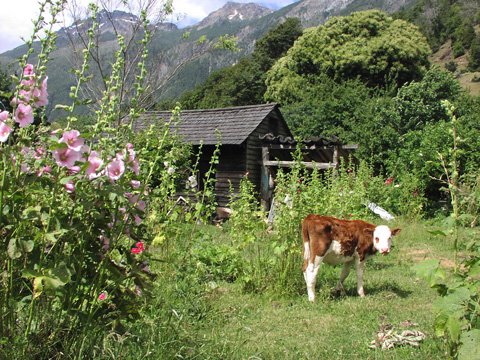
December 26, 2005 - January 14,
2006
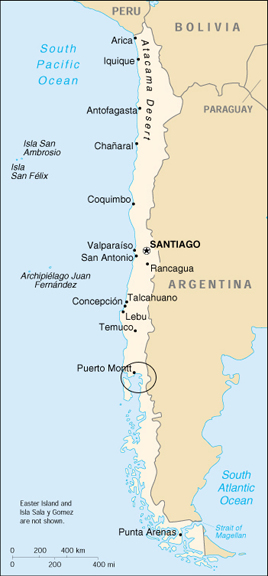
Located in northern Patagonia and the southern lake region of
southern Chile, Cochamó County (Comuna) has only been settled
for about 100 years. The primary activity in the area is livestock
and dairy farming, selling products in Puerto Montt, about 100-150
kms away. Now that a road has been built, the tourists will come. To
arrive in the town of Puelo, a bus leaves from Pto. Montt twice
daily, stopping in Pto. Varas, Ensenada, Ralún and
Cochamó. The ride along the shore of the Reloncaví
Estuary is scenic and colorful. At the end of a long ride, I found a
comfortable room for the night in Río Puelo, in a family
home.
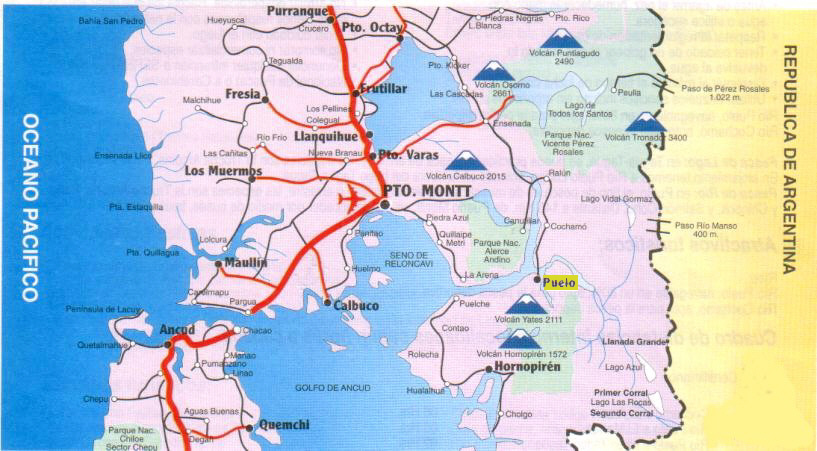
At noon the next day, I caught the first bus to go up the
Río Puelo Valley to Llanada Grande. The bus delivered the
passengers to the ferry at Lake Tagua Tagua. The ferry accomodates
people, horses, and cars.
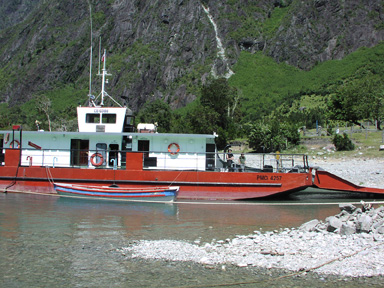
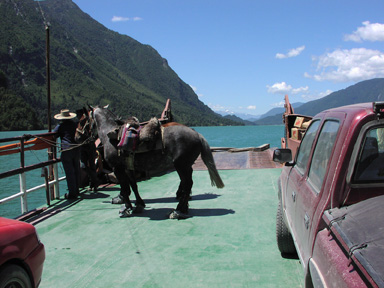
A small vehicle met us at the other end of the lake, and about 20
passengers squeezed into the furgón designed for 8-10 people.
Only three of us were tourists. The others seemed to be residents of
the area and knew each other. What I could see beyond arms and legs
was a gorgeous scenery of forest, river, and mountains. Just after
Llanada Grande (see map, above) the furgón let me off at the
Eliecer crossing, a farm from where I would hike about 90 minutes to
Lago Azul.
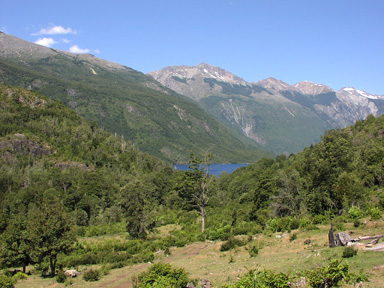
At the lake, two Austrians and I met Cristián who took us
across Lago Azul in an outboard boat. The color of the lake is a deep
blue that I have not seen elsewhere.
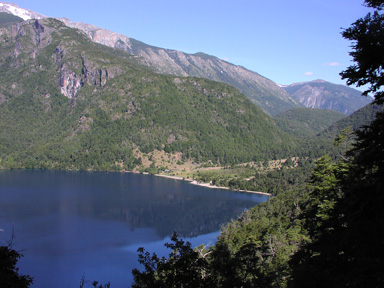
The 20-minute crossing brought us to a family farm, the only one
on this spectacular lake. The Austrians continued to hike to the next
lake, Lago Las Rocas, while I took off my boots and joined the host
family of four on the porch to get acquainted. A Chilean couple and
young daughter were camping on the farm, while I took a room in the
house. We all took meals together in the kitchen, where the sturdy
wood stove was the center of activity.
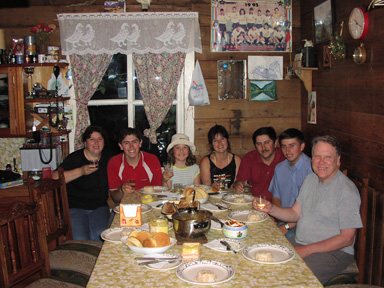
Enjoying the excellent food and hospitality of the
Gallardo-Eggers family
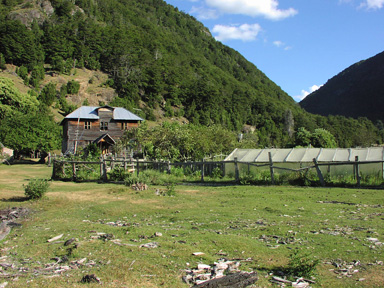
The farm house was built in the early 20th century, and now has a
rebuilt interior. Quantities of domestic animals and wild birds
filled the land and sky around the farm. Horses, cows, sheep, goats
and pigs roamed freely, as did chickens, turkeys, ducks and geese.
And there was always a dog and cat to greet. A field was fenced and
reserved for growing natural grasses, to provide hay for the horses.
It is cut only once each year, a sufficient supply for the next year.
Wild bandurrias and cauquenes often dominated the soundscape. After a
storm a large flock of green parrots screeched through the
valley.
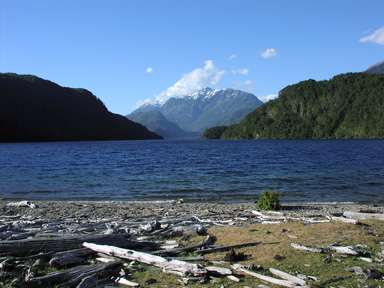
Turn around, and this is the opposite view.
Lovely.
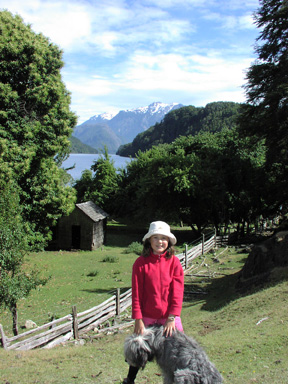
Carola
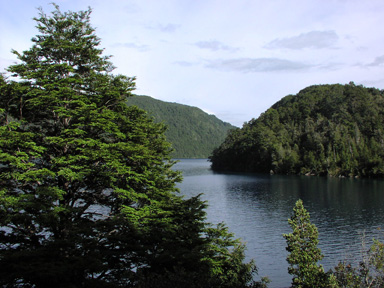
Lago Azul
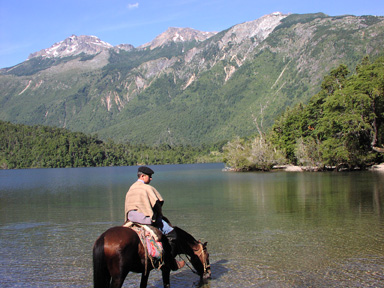
Fernando, Lago Azul
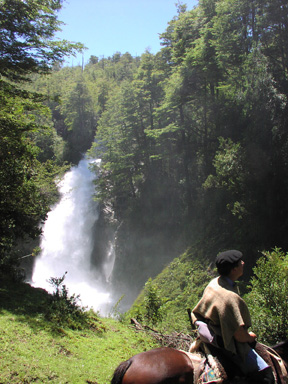
Río Cascada
Fernando took me out for the day on horseback. We crossed three
mountain ridges to reach the Puelo River at the Pasarela
(bridge) near the community of Primer Corral. We passed through
thickly forested country on muddy and dusty trails that connect
remote farms, returning home after eight hours in the saddle. The
river connects Puelo Lake in Argentina with the town of Puelo in
Chile.
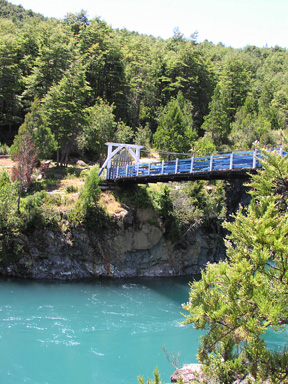
Pasarela over the Río Puelo
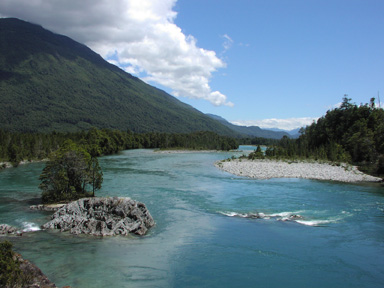
Río Puelo flows north to the Estuario
Reloncaví
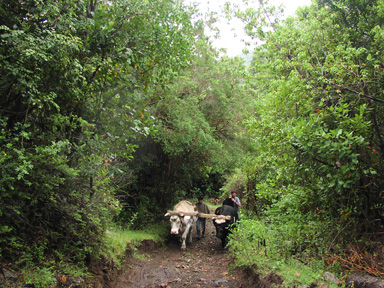
No tractors here
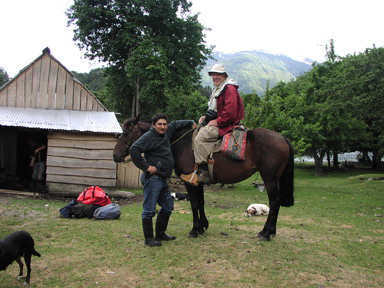
With Miguel, as I prepare to leave Lago Azul and ride to
the Argentine border
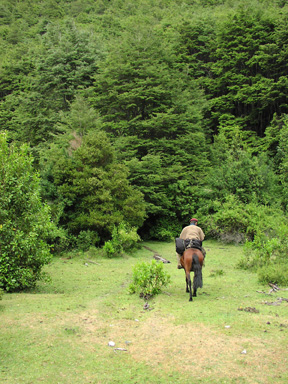
Cristián guides me to Lago Inferior and the
Argentine border. After 3.5 hours riding, the Chilean border official
offered some very welcome pasta and sopapilla. Cristián
returned home with the horses while I hired a boat to take me across
the lake, then up Río Turbio to Lago Puelo. Finding Argentine
tourists with cars presented mild culture shock, after several days
in the Chilean Andes.
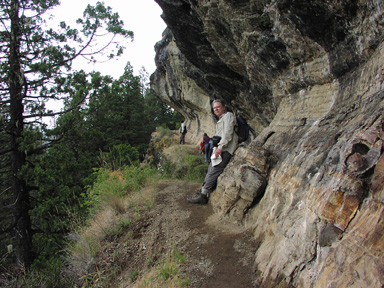
El Bolsón, Argentina, on the trail to the Cabeza
del Indio, overlooking the spectacular valley of Río
Azul
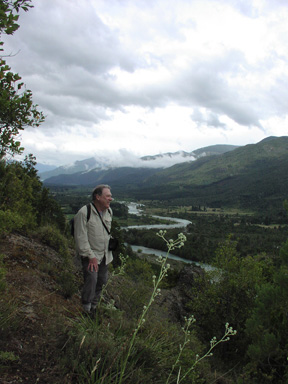
Río Azul, near El Bolsón, with Lago Puelo
in the background
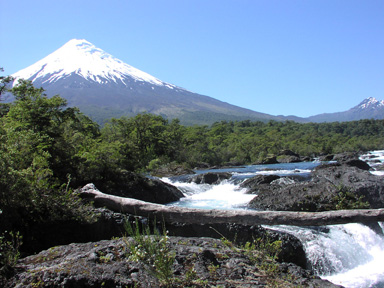
Back in Chile after a short visit to Argentina, here is a
favorite place to visit on a sunny day,
Saltos de Petrohue with a view of Osorno Volcano
Here is a most innovative website of Cochamó
in English.






















